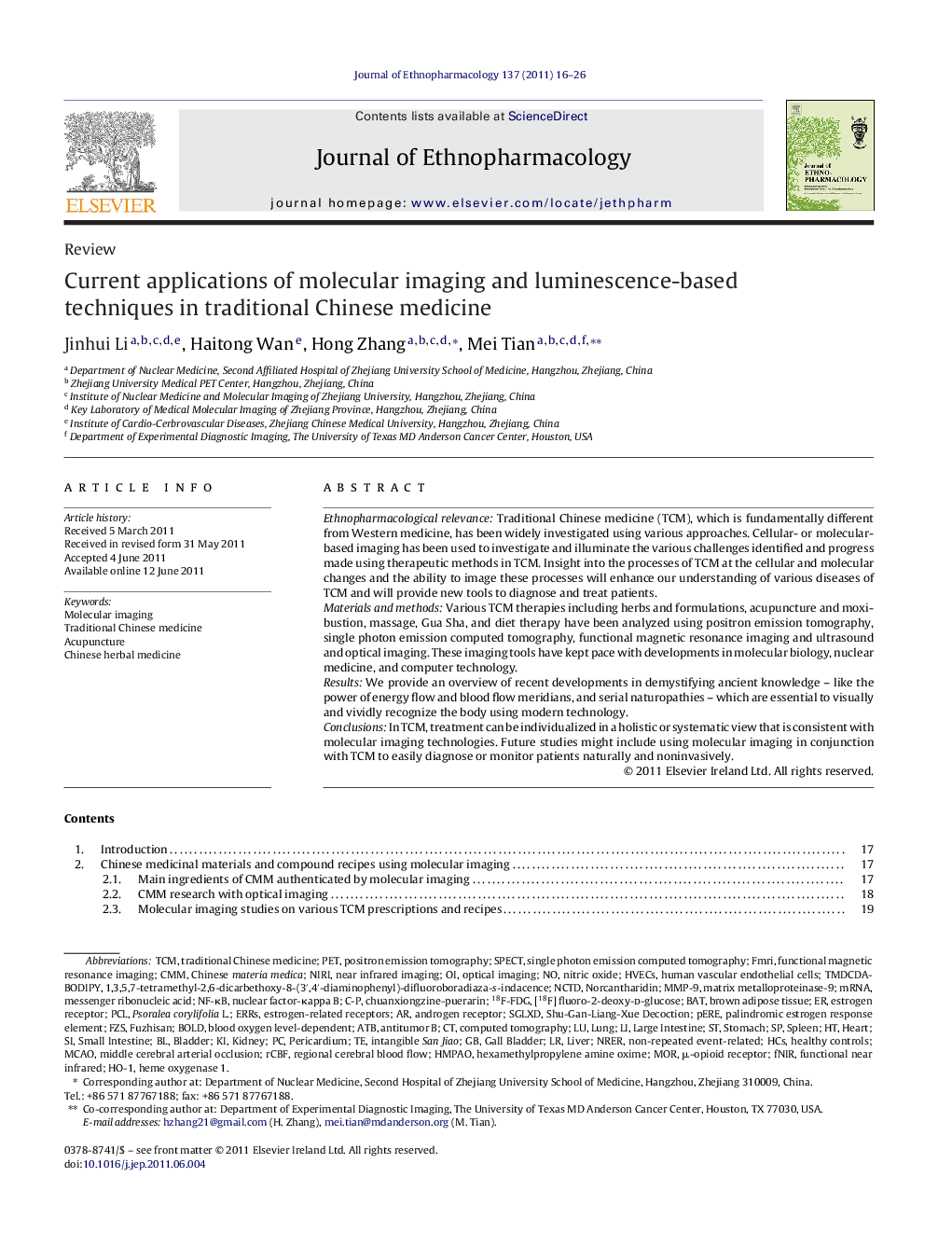| Article ID | Journal | Published Year | Pages | File Type |
|---|---|---|---|---|
| 5838618 | Journal of Ethnopharmacology | 2011 | 11 Pages |
Abstract
Ethnopharmacological relevanceTraditional Chinese medicine (TCM), which is fundamentally different from Western medicine, has been widely investigated using various approaches. Cellular- or molecular-based imaging has been used to investigate and illuminate the various challenges identified and progress made using therapeutic methods in TCM. Insight into the processes of TCM at the cellular and molecular changes and the ability to image these processes will enhance our understanding of various diseases of TCM and will provide new tools to diagnose and treat patients.Materials and methodsVarious TCM therapies including herbs and formulations, acupuncture and moxibustion, massage, Gua Sha, and diet therapy have been analyzed using positron emission tomography, single photon emission computed tomography, functional magnetic resonance imaging and ultrasound and optical imaging. These imaging tools have kept pace with developments in molecular biology, nuclear medicine, and computer technology.ResultsWe provide an overview of recent developments in demystifying ancient knowledge - like the power of energy flow and blood flow meridians, and serial naturopathies - which are essential to visually and vividly recognize the body using modern technology.ConclusionsIn TCM, treatment can be individualized in a holistic or systematic view that is consistent with molecular imaging technologies. Future studies might include using molecular imaging in conjunction with TCM to easily diagnose or monitor patients naturally and noninvasively.
Keywords
middle cerebral arterial occlusion18F-FDGMMP-9TCMBATBOLDMCAOCMMfNIRHCsrCBFC-PATBHMPAOPèrePsoralea corylifolia L.FZSHO-1PCLNCTDmRNAMORNF-κBμ-Opioid receptorbrown adipose tissueSPECTMolecular imagingNear infrared imagingOptical imagingfMRIfunctional magnetic resonance imagingsingle photon emission computed tomographycomputed tomographyPositron emission tomographyRegional cerebral blood flowmessenger ribonucleic acidLarge intestineSmall intestineLungHuman vascular endothelial cellstraditional Chinese medicineAcupunctureSpleenHeartMatrix metalloproteinase-9Chinese materia medicaBladderStomachnorcantharidinNitric oxideheme oxygenase 1blood oxygen level-dependentPETPericardiumLiverKidneyhealthy controlsGall bladderChinese herbal medicineAndrogen ReceptorEstrogen receptorEstrogen-related receptors
Related Topics
Health Sciences
Pharmacology, Toxicology and Pharmaceutical Science
Pharmacology
Authors
Jinhui Li, Haitong Wan, Hong Zhang, Mei Tian,
